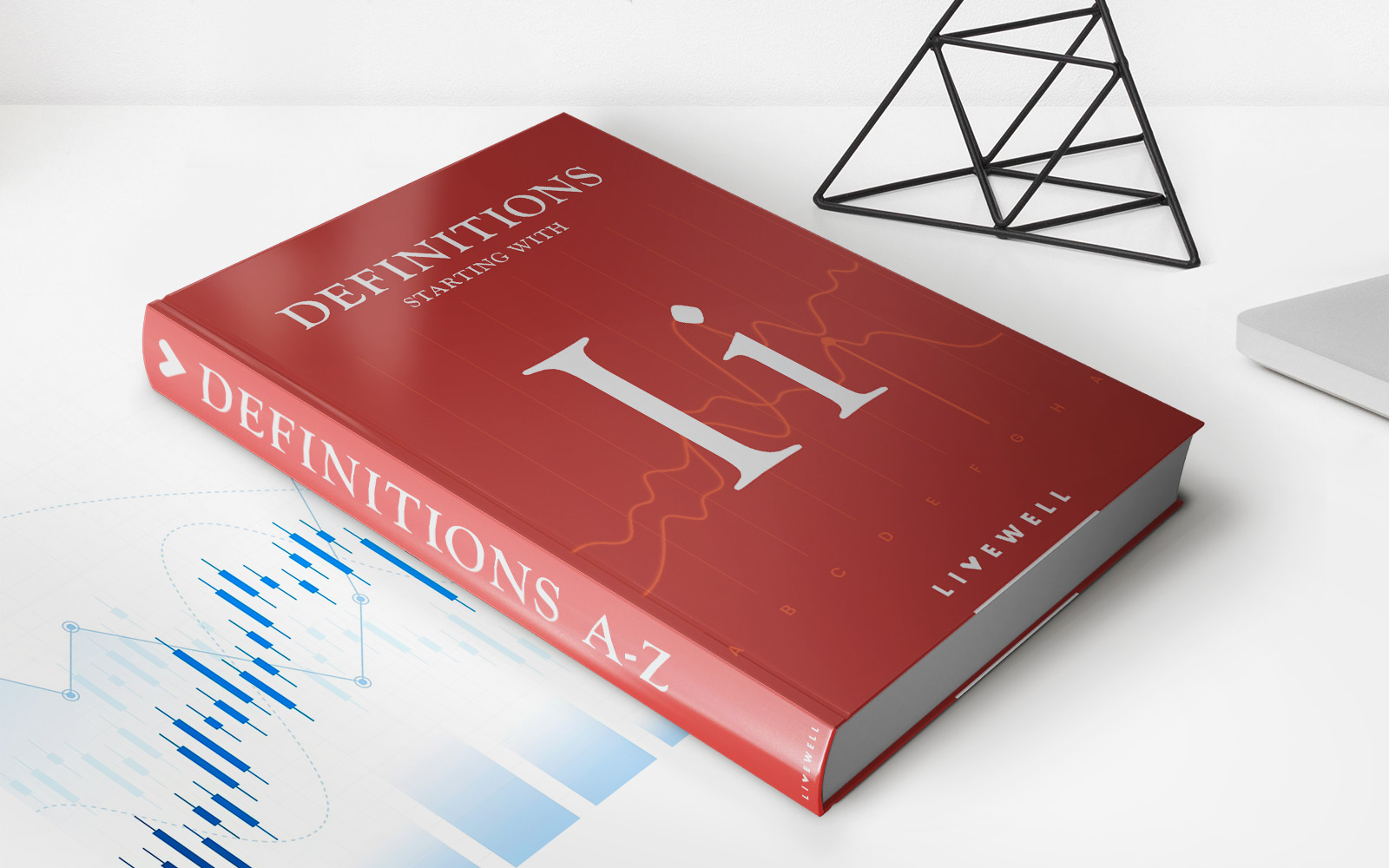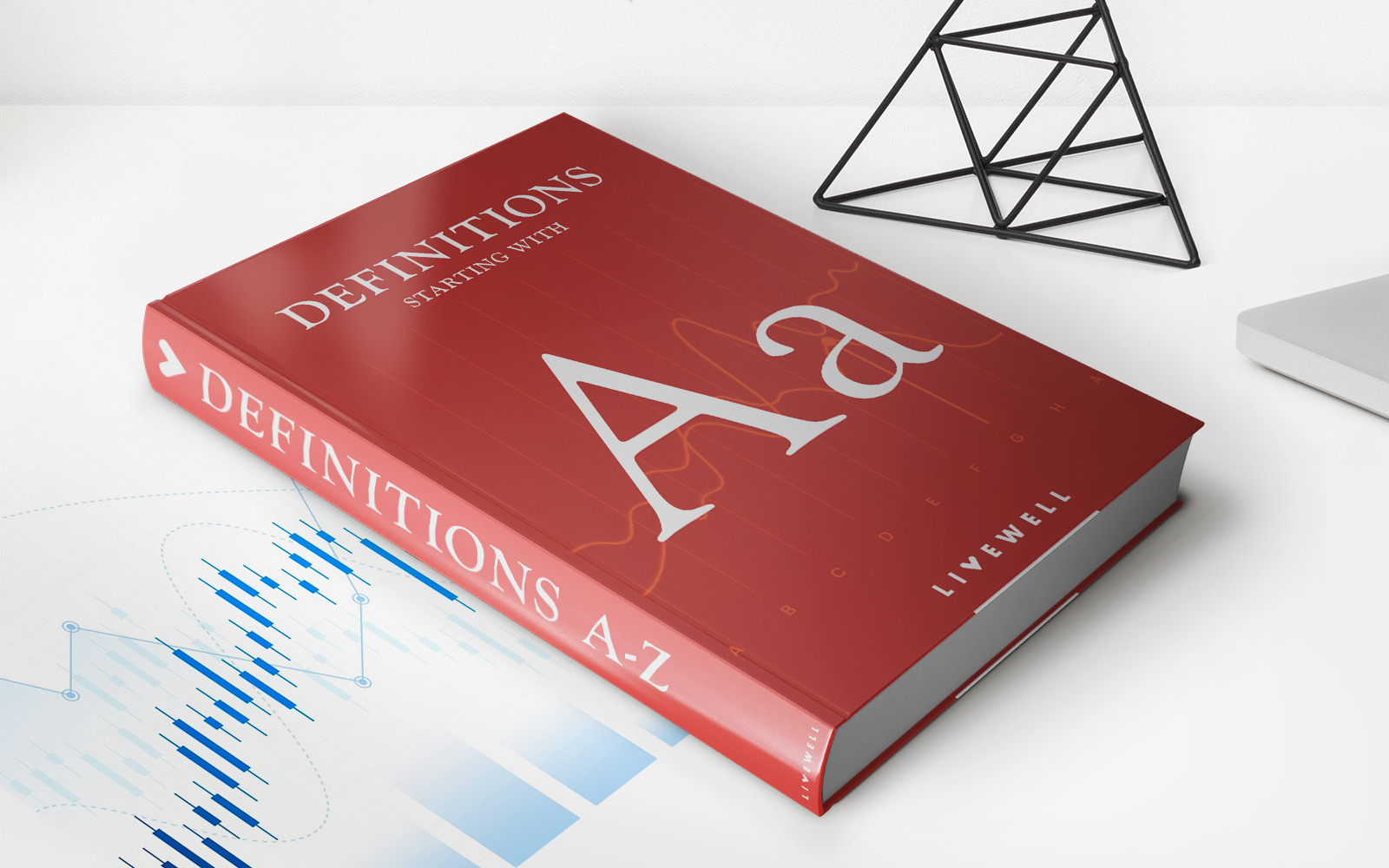Home>Finance>How Do You Calculate The Proportion Of Debt In A Companies Capital Structure


Finance
How Do You Calculate The Proportion Of Debt In A Companies Capital Structure
Modified: December 30, 2023
Learn how to calculate the proportion of debt in a company's capital structure in finance. Gain insights into determining financial leverage and risk.
(Many of the links in this article redirect to a specific reviewed product. Your purchase of these products through affiliate links helps to generate commission for LiveWell, at no extra cost. Learn more)
Table of Contents
- Introduction
- Understanding Capital Structure
- Components of Capital Structure
- Debt in Capital Structure
- Importance of Calculating Proportion of Debt
- Methods to Calculate Proportion of Debt
- Weighted Average Cost of Capital (WACC)
- Evaluating the Proportion of Debt
- Factors Influencing the Proportion of Debt
- Conclusion
Introduction
When it comes to evaluating the financial health of a company, understanding its capital structure is vital. A company’s capital structure is the combination of different sources of funding it utilizes to finance its operations and growth. One of the key components of a company’s capital structure is debt.
Debt plays a crucial role in a company’s financial structure as it represents borrowed funds that need to be repaid over a specified period. The proportion of debt in a company’s capital structure is an important metric that helps investors, creditors, and analysts assess the level of risk and financial stability.
Calculating the proportion of debt in a company’s capital structure provides valuable insights into its ability to meet its financial obligations, pay interest on its loans, and manage its cash flows effectively. Furthermore, understanding the proportion of debt helps determine the company’s risk appetite and its ability to leverage borrowed funds for growth and profitability.
In this article, we will delve into the significance of calculating the proportion of debt in a company’s capital structure. We will discuss the different methods used to calculate this metric and how it influences the company’s overall financial health. Additionally, we will explore the factors that influence the proportion of debt and shed light on the evaluation process.
Understanding the relationship between a company’s capital structure and its proportion of debt is essential for investors, creditors, and financial analysts. By comprehending the intricacies of a company’s debt composition, stakeholders can make informed decisions regarding investments, creditworthiness, and overall financial risk.
Understanding Capital Structure
The capital structure of a company refers to the way it finances its operations through a combination of different sources of funding. These sources can include debt, equity, and retained earnings. The capital structure represents the mix of these various sources and their proportions within the company’s total capital.
The choice of capital structure is a critical decision for any company, as it determines the financial risk, cost of capital, and flexibility in managing day-to-day operations and future growth. By understanding the components and dynamics of the capital structure, stakeholders can better evaluate the financial health and stability of a company.
In general, there are two main components of a company’s capital structure: debt and equity.
- Debt: Debt represents the money borrowed by the company from external sources, such as banks, financial institutions, or bondholders. It involves a legal obligation to repay the borrowed funds along with interest within a specified period. Debt can be in the form of loans, bonds, or other forms of debt instruments.
- Equity: Equity refers to the ownership stake in the company held by shareholders. It represents the residual interest in the company’s assets after deducting liabilities. Equity holders participate in the company’s profits and have voting rights in decision-making processes. Equity can be acquired through the issuance of common stock or preferred stock.
The proportion of debt and equity in a company’s capital structure can vary depending on factors such as the industry, business model, growth stage, and risk appetite. Companies with higher levels of debt are considered to have a higher financial risk, as they have greater obligations to repay debt and interest payments, which may impede their ability to generate profits and sustain growth.
On the other hand, companies with a higher proportion of equity in their capital structure have a lower financial risk since they rely less on borrowed funds. However, equity financing may dilute existing shareholders’ ownership and control of the company.
Understanding the balance between debt and equity in a company’s capital structure is crucial for assessing its financial stability, risk profile, and ability to generate returns for its stakeholders. By analyzing this relationship, investors and creditors can make informed decisions about investing in or extending credit to the company.
Components of Capital Structure
A company’s capital structure is made up of different components that determine how it raises funds to finance its operations and expansion. These components include debt, equity, and retained earnings. Each component plays a unique role in shaping the company’s financial structure and risk profile.
Let’s take a closer look at the components of a company’s capital structure:
- Debt: Debt is a crucial component of capital structure, representing the funds borrowed by the company from external sources. It can include bank loans, bonds, or other types of debt instruments. Companies take on debt to finance various activities, such as purchasing assets, funding operations, or expanding their business. Debt comes with a cost, in the form of interest payments, and a legal obligation to repay the borrowed funds within a specified period. The amount and terms of debt depend on factors like creditworthiness, interest rates, and the company’s risk profile.
- Equity: Equity represents the ownership interest in the company held by shareholders. It is obtained through the issuance of common stock or preferred stock. Equity holders receive dividends and have voting rights in major company decisions. Unlike debt, equity does not require repayment, but it entails sharing profits and ownership dilution for existing shareholders when new equity is issued.
- Retained Earnings: Retained earnings are the accumulated profits that a company reinvests back into the business rather than distributing them as dividends. Retained earnings act as an internal source of funding and contribute to the equity portion of the capital structure. Companies can utilize retained earnings to finance expansion, research and development, or debt repayment, depending on their financial goals and priorities.
The composition of a company’s capital structure depends on various factors, including industry norms, business objectives, risk tolerance, and access to different sources of funding. Finding the right balance between debt and equity is crucial for managing financial risk and optimizing the cost of capital.
It is important to note that the proportion of each component within the capital structure can influence the company’s financial flexibility, borrowing capacity, and ability to generate returns for its stakeholders. Companies with a higher proportion of debt may experience greater financial leverage, but also higher interest payments and default risk. Conversely, companies with a greater proportion of equity may enjoy a more stable financial position, but at a potentially higher cost of equity and dilution of ownership interests.
By analyzing the components of a company’s capital structure, investors, creditors, and financial analysts can gain valuable insights into its financial health and risk profile. This information is essential for making informed investment decisions, assessing creditworthiness, and understanding a company’s ability to manage its financial obligations and generate long-term value.
Debt in Capital Structure
Debt is a crucial component of a company’s capital structure. It represents the funds borrowed by the company from external sources to finance its operations, investments, or other financial needs. The inclusion of debt in a company’s capital structure comes with advantages and disadvantages that impact the company’s financial health, risk profile, and overall performance.
Let’s delve deeper into the significance of debt in a company’s capital structure:
- Capital Availability: Debt allows companies to access additional capital that they may not have on hand. By borrowing funds, companies have the financial resources to invest in new projects, expand operations, or fund working capital requirements, without diluting ownership or raising equity capital.
- Cost of Capital: Debt is often considered a cheaper source of capital compared to equity. Debt providers, such as banks or bondholders, expect interest payments as compensation for the risk they undertake by lending money. These interest payments are typically tax-deductible, reducing the overall cost of debt for a company.
- Financial Leverage: Debt allows companies to leverage their equity investment. By using borrowed funds, companies can increase their return on equity (ROE) if the profitability of the investment exceeds the cost of debt. This amplification effect can enhance shareholder returns and boost the company’s growth potential.
- Fixed Obligations: Debt comes with legal obligations to repay the borrowed funds and make interest payments on time. These fixed obligations can pose a challenge, especially if the company experiences cash flow issues or faces adverse economic conditions. Failure to meet debt obligations can lead to financial distress, including downgrades in credit ratings or even bankruptcy.
- Financial Risk: The proportion of debt in a company’s capital structure affects its financial risk profile. High levels of debt can increase the company’s financial risk and vulnerability to economic downturns or changes in interest rates. On the other hand, low levels of debt may indicate a conservative approach, but it may also limit the company’s growth potential.
It is crucial for companies to strike a balance between utilizing debt as a financial tool and managing the associated risks. The right proportion of debt in a company’s capital structure depends on factors such as industry norms, cash flow stability, growth prospects, and risk tolerance. Companies need to assess their ability to service debt, avoid excessive leverage, and maintain an optimal level of financial flexibility.
Overall, debt plays a significant role in a company’s capital structure by providing access to capital, influencing the cost of capital, and impacting financial risk and leverage. It is essential for companies and stakeholders to understand the implications of debt in their financial decisions and make strategic choices that align with the company’s objectives and risk appetite.
Importance of Calculating Proportion of Debt
Calculating the proportion of debt in a company’s capital structure is crucial for various stakeholders, including investors, creditors, and financial analysts. This calculation provides valuable insights into the company’s financial health, risk profile, and ability to meet its financial obligations. Let’s explore the importance of calculating the proportion of debt:
- Assessing Financial Risk: The proportion of debt in a company’s capital structure is a key indicator of its financial risk. A higher proportion of debt signifies a greater risk of default, as the company has a larger amount of debt obligations to fulfill. Calculating the proportion of debt helps stakeholders understand the company’s risk profile and make informed decisions regarding investment or credit risk exposure.
- Evaluating Liquidity: The calculation of the proportion of debt allows stakeholders to evaluate the company’s liquidity position. Higher levels of debt may indicate a greater reliance on external financing, potentially impacting the company’s ability to generate sufficient cash flows for day-to-day operations, debt service, and growth initiatives.
- Determining Financial Stability: The proportion of debt in a company’s capital structure is a crucial factor in assessing its overall financial stability. A balanced ratio of debt indicates a stable financial structure, while an excessive level of debt may raise concerns about the company’s ability to manage its financial obligations and withstand economic downturns.
- Understanding Leverage and Profitability: Calculating the proportion of debt helps stakeholders evaluate the company’s leverage and its impact on profitability. A higher ratio of debt may indicate increased financial leverage, potentially amplifying returns on equity during profitable periods. However, it also increases the financial risk and interest burden, which may impact profitability during challenging economic conditions.
- Comparative Analysis: It is common practice to compare the proportion of debt across companies within the same industry. By calculating this metric, stakeholders can benchmark the company against its peers, identifying potential strengths or weaknesses in terms of financial risk, capital structure efficiency, and industry norms.
Calculating the proportion of debt provides a quantitative measure of a company’s financial structure. This information is essential for making informed decisions about investment, creditworthiness, and risk management. Investors can gauge the risk-return tradeoff and assess the company’s ability to generate returns on investment. Creditors can evaluate the company’s ability to service debt and its creditworthiness. Financial analysts can make comprehensive evaluations of the company’s financial health and prospects.
It is important to note that the proportion of debt alone does not provide a complete picture of a company’s financial health. It should be analyzed in conjunction with other financial metrics, industry trends, and specific company circumstances to gain a comprehensive understanding of the overall financial position and risk profile.
By calculating the proportion of debt in a company’s capital structure, stakeholders can make informed decisions based on a clear understanding of the company’s financial stability, risk tolerance, and capacity to meet its financial obligations.
Methods to Calculate Proportion of Debt
There are various methods to calculate the proportion of debt in a company’s capital structure. These methods provide different perspectives on the company’s debt position and can be used by stakeholders to assess its financial health and risk profile. Let’s explore some common methods:
- Debt-to-Equity Ratio: The debt-to-equity ratio is a widely used metric to calculate the proportion of debt in a company’s capital structure. It compares the total debt of the company to its total equity. The formula for the debt-to-equity ratio is:
Debt-to-Equity Ratio = Total Debt / Total Equity
This ratio indicates how much debt the company has relative to its equity. A higher ratio suggests a larger proportion of debt in the capital structure, indicating potentially higher financial risk.
- Debt Ratio: The debt ratio measures the proportion of a company’s assets that are financed by debt. It is calculated by dividing the total debt by the total assets. The formula for the debt ratio is:
Debt Ratio = Total Debt / Total Assets
This ratio provides insights into the reliance of the company’s assets on borrowed funds. A higher debt ratio indicates a larger proportion of debt financing in the capital structure.
- Long-Term Debt Ratio: The long-term debt ratio focuses specifically on long-term debt, excluding short-term liabilities. It is calculated by dividing the long-term debt by the total assets. The formula for the long-term debt ratio is:
Long-Term Debt Ratio = Long-Term Debt / Total Assets
This ratio provides a measure of the company’s long-term debt burden relative to its total assets. It helps stakeholders analyze the long-term financial risk and stability of the company.
- Interest Coverage Ratio: The interest coverage ratio assesses the company’s ability to meet its interest obligations. It compares the company’s earnings before interest and taxes (EBIT) to its interest expenses. The formula for the interest coverage ratio is:
Interest Coverage Ratio = EBIT / Interest Expenses
A higher interest coverage ratio indicates a company’s strong ability to meet its interest obligations, suggesting a lower financial risk and a healthier debt position.
These methods provide quantitative measures to calculate the proportion of debt within a company’s capital structure. Each method offers a unique perspective on the company’s debt position and contributes to a comprehensive analysis of its financial health and risk profile.
It is important to note that these calculations should be evaluated in conjunction with other financial metrics and industry benchmarks to gain a holistic understanding of the company’s capital structure and financial position. Furthermore, it is essential to consider the specific circumstances, industry norms, and risk appetite when interpreting the results.
By using these methods to calculate the proportion of debt, stakeholders can assess a company’s debt position, financial risk, and overall solvency. This information is crucial for making informed decisions regarding investment, creditworthiness, and risk management.
Weighted Average Cost of Capital (WACC)
The Weighted Average Cost of Capital (WACC) is a financial metric that calculates the average cost of financing for a company. It is an important tool used by investors, analysts, and companies in making informed decisions regarding capital allocation and project valuations.
The WACC takes into account the various sources of funding in a company’s capital structure, including debt and equity, and assigns a weighted average cost based on the proportion of each source relative to the total capital structure. The formula for calculating WACC is as follows:
WACC = (E/V * Re) + (D/V * Rd * (1 - Tax Rate))
Where:
- E is the market value of equity
- V is the total market value of debt and equity
- Re is the cost of equity
- D is the market value of debt
- Rd is the cost of debt
- Tax Rate is the corporate tax rate
The WACC serves as the minimum acceptable return that a company must generate in order to satisfy its shareholders and creditors. It represents the average rate of return required by all providers of capital to maintain their current investments in the company.
The WACC is a valuable metric for several reasons:
- Capital Allocation Decisions: The WACC helps determine the appropriate discount rate for evaluating potential investment opportunities. Projects with a return higher than the WACC are considered viable, as they generate value for the company and its stakeholders.
- Valuation: The WACC is used in discounted cash flow (DCF) analysis to estimate the intrinsic value of a company or investment. It assists in determining the fair value of a company’s stock or evaluating the attractiveness of potential acquisitions.
- Cost of Capital: The WACC represents the average cost of capital for the company. A higher WACC suggests that the cost of raising capital is relatively higher, impacting the profitability and financial viability of the company. Companies strive to lower their WACC to reduce financing costs and enhance competitiveness.
- Optimal Capital Structure: By considering the weightings of debt and equity in the WACC calculation, companies can assess their optimal capital structure. They can determine the appropriate mix of debt and equity financing necessary to minimize the overall cost of capital and maximize shareholder value.
It is essential to note that the WACC is not a static metric, as it can fluctuate over time due to changes in interest rates, market conditions, and the company’s capital structure. Regular reassessment and adjustments are necessary to ensure accurate calculations and informed decision-making.
The WACC offers valuable insights for companies and stakeholders in evaluating investment opportunities, estimating company value, and maintaining an optimal capital structure. By considering the weighted average cost of capital, companies can make informed financial decisions that align with the company’s goals and maximize shareholder and stakeholder value.
Evaluating the Proportion of Debt
Evaluating the proportion of debt in a company’s capital structure is a critical analysis for investors, creditors, and financial analysts. It provides valuable insights into the company’s financial risk, level of leverage, and ability to meet its financial obligations. Several key factors should be considered when evaluating the proportion of debt:
- Industry Comparison: Assessing the proportion of debt relative to other companies in the same industry can help gauge the company’s position. Comparing the debt levels and capital structure of competitors can provide a benchmark to determine if a company’s proportion of debt is in line with industry norms.
- Debt Sustainability: It is crucial to evaluate the company’s ability to service its debt. Analyzing factors such as cash flow generation, profitability, interest coverage ratio, and debt maturity schedule can provide insights into the company’s ability to meet its debt obligations on time and without financial strain.
- Risk and Creditworthiness: A higher proportion of debt generally indicates a greater financial risk. Evaluating the company’s creditworthiness, debt rating, and credit default swap (CDS) spreads can provide valuable information on lenders’ perception of the company’s risk level and ability to repay debt in adverse circumstances.
- Cash Flow and Liquidity: Assessing the company’s cash flow and liquidity position is essential when evaluating the proportion of debt. A high level of debt, coupled with insufficient cash flows or a lack of available liquid assets, may indicate a higher risk of default and potential liquidity issues in the future.
- Profitability and Return on Investment: Analyzing the company’s profitability and return on investment (ROI) is crucial in determining the effectiveness of debt utilization. Companies should demonstrate the ability to generate sufficient returns on investment to cover the cost of debt and create value for shareholders.
- Growth Potential: The proportion of debt in a company’s capital structure can impact its growth potential. Higher levels of debt may provide the company with the financial leverage necessary for expansion and investment. However, excessive debt can also hinder growth prospects due to increased interest payments and financial obligations.
Evaluating the proportion of debt requires a holistic analysis of the company’s financial statements, risk profile, industry dynamics, and future prospects. It is essential to consider the broader economic context, interest rate environment, and company-specific factors when interpreting the results.
Furthermore, it is important to note that the optimal proportion of debt varies among industries and companies, depending on their risk tolerance, profitability, growth stage, and cash flow stability. There is no one-size-fits-all approach, and a thorough analysis is necessary to understand the nuances of each company’s capital structure.
By evaluating the proportion of debt in a company’s capital structure, stakeholders gain insights into the company’s financial risk, leverage, and ability to meet its obligations. This information helps investors, creditors, and financial analysts make informed decisions and assess the company’s financial health and prospects.
Factors Influencing the Proportion of Debt
The proportion of debt in a company’s capital structure is influenced by various factors, including industry dynamics, company characteristics, market conditions, and managerial preferences. Understanding these factors is crucial for evaluating a company’s debt position and its implications. Let’s explore some key factors that influence the proportion of debt:
- Industry Norms: Different industries have varying levels of debt usage. Some industries, such as utilities or telecommunications, require substantial upfront investments, leading to higher debt levels. Understanding industry benchmarks and norms helps determine an appropriate debt proportion for a specific company.
- Stage of Business: The stage of a company’s lifecycle can impact its debt usage. Early-stage companies may rely more on equity financing, while mature companies with stable cash flows may utilize debt to fuel expansion or improve shareholder returns. Startups with limited operating history may face challenges in accessing debt financing.
- Risk Appetite: The risk tolerance and management’s preferences also play a role in determining the proportion of debt. Some companies may take a conservative approach, preferring lower levels of debt to minimize financial risk. Conversely, more aggressive companies may take on higher debt levels to leverage their equity and accelerate growth.
- Interest Rates: The prevailing interest rate environment influences the availability and cost of debt financing. When interest rates are low, companies may be incentivized to borrow more, as the cost of debt is relatively cheaper. Conversely, high interest rates may discourage companies from taking on additional debt, especially if they anticipate challenges in servicing interest payments.
- Company Size and Creditworthiness: Company size and creditworthiness impact a company’s debt options. Larger, more established companies with strong credit ratings and track records may have access to cheaper debt financing and more favorable borrowing terms. Smaller companies or those with weaker credit profiles may face higher borrowing costs.
- Business Model and Cash Flow Stability: The company’s business model and cash flow stability influence its debt usage. Companies with stable revenue streams and predictable cash flows are typically more comfortable taking on debt. Conversely, companies with volatile or seasonal cash flows may have limited access to debt financing or may incur higher borrowing costs.
- Tax Considerations: Tax policies and incentives can influence the attractiveness of debt financing. Interest payments on debt are often tax-deductible expenses, reducing the overall cost of debt for companies. This tax advantage may make debt financing more appealing compared to equity financing, which does not offer similar tax benefits.
It is important to note that the proportion of debt may fluctuate over time due to changes in these factors, economic conditions, and strategic decisions by the company. Monitoring and reassessing these factors regularly helps stakeholders understand the evolution of a company’s capital structure and financial risk.
By considering the various factors that influence the proportion of debt, stakeholders can gain insights into a company’s financing choices and the associated implications. It allows for a better understanding of the company’s risk profile, financial stability, and growth potential.
Conclusion
The proportion of debt in a company’s capital structure plays a significant role in determining its financial health, risk profile, and ability to meet its obligations. Evaluating and understanding this proportion is vital for investors, creditors, and financial analysts in making informed decisions and assessing the company’s overall financial position.
Throughout this article, we have explored various aspects of the proportion of debt, including its calculation methods, importance, and factors influencing it. By calculating the proportion of debt using metrics such as the debt-to-equity ratio or long-term debt ratio, stakeholders can gain insights into the company’s risk level and financial stability.
We have seen that the proportion of debt is influenced by industry norms, a company’s stage of business, risk appetite, interest rates, company size, creditworthiness, business model, cash flow stability, and tax considerations. Each factor adds nuance to understanding a company’s debt position and capital structure.
Ultimately, the proportion of debt should be evaluated in the context of the company’s specific circumstances and industry dynamics. It is not a one-size-fits-all approach, and the optimal proportion of debt may vary for different companies.
By carefully assessing the proportion of debt, stakeholders can make informed decisions about investment, creditworthiness, and risk management. They can evaluate the company’s financial risk, liquidity, profitability, and growth potential, aligning their choices with the company’s objectives and risk tolerance.
In conclusion, the proportion of debt is a critical aspect of a company’s capital structure. By understanding its significance, calculating it accurately, and considering the various influencing factors, stakeholders can gain valuable insights into a company’s financial health and risk profile. This knowledge enables better decision-making, leading to more informed investments, credit decisions, and overall financial management.














